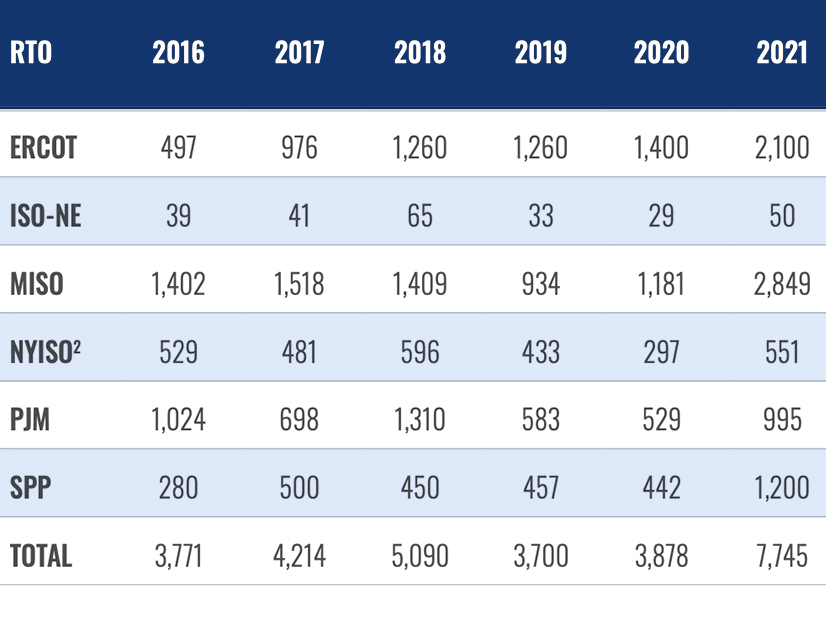The cost of transmission congestion doubled in the organized electricity markets between 2020 and 2021, rising by billions of dollars, according to a report released Thursday by Grid Strategies.
All of the ISOs and RTOs except for CAISO publish their congestion costs; they were up $7.7 billion on the year, which, extrapolated to the rest of the country, leads to a national cost of $13.4 billion, according to “Transmission Congestion Costs in the U.S. RTOs.”
Congestion costs rebounded in 2021 after reduced demand from the height of the COVID-19 pandemic in 2020 led to lower costs that year, but other factors helped fuel that increase.
“The price transparency and generally more favorable transmission expansion policies in the RTO regions tend to reduce congestion in those areas relative to non-RTO regions,” the paper said. “However, RTO regions have experienced more renewable deployment in recent years than non-RTO areas, which may somewhat offset those factors as renewable expansion tends to increase transmission congestion when it outpaces transmission expansion.”
The best way to cut congestion is to build new transmission, the report said, citing a PJM analysis that found that transmission enhancements approved in the past decade have cut costs to serve consumers by $280 million annually.
No similar numbers exist for how interregional lines would benefit consumers by cutting congestion, but Lawrence Berkeley National Laboratory found that interregional transmission links can have just as much, if not more, value than intraregional links.
While the bounce back from the pandemic was a national trend, different regions had different factors impacting the rise of congestion.
ISO-NE continues to deal with increased congestion as transmission development has lagged the development of renewable energy.
“A new wind generator in coastal Maine went online in late 2020, and along with other abundant wind generation, and in the absence of proactive transmission additions, congestion increased,” the report said.
Higher natural gas prices, especially on the coldest days of winter, helped to push up congestion in NYISO. MISO saw congestion costs nearly triple in 2021 to $2.8 billion, with roughly $730 million of that total alone from the February storm, also known as Winter Storm Uri, that knocked out power in Texas and surrounding states.
“This is consistent with the general pattern nationally that much of the congestion (and value of transmission) occurs in a relatively small percentage of the hours,” the report said.
SPP saw congestion prices more than double to $1.2 billion, with its market monitor attributing the increase to the distance between generation and load centers, outages of key transmission lines, volatile fuel prices and Uri.
Texas was also obviously heavily impacted by Uri, with congestion costs representing 33% of total costs in February 2021, compared to 15% in February 2020. The growth of renewables also helped push up congestion.
“In 2021, 3 GW of wind output and 3.6 GW of solar came online [in ERCOT] without concomitant transmission development, which contributed to a real-time congestion cost increase of 46%,” the report said.



